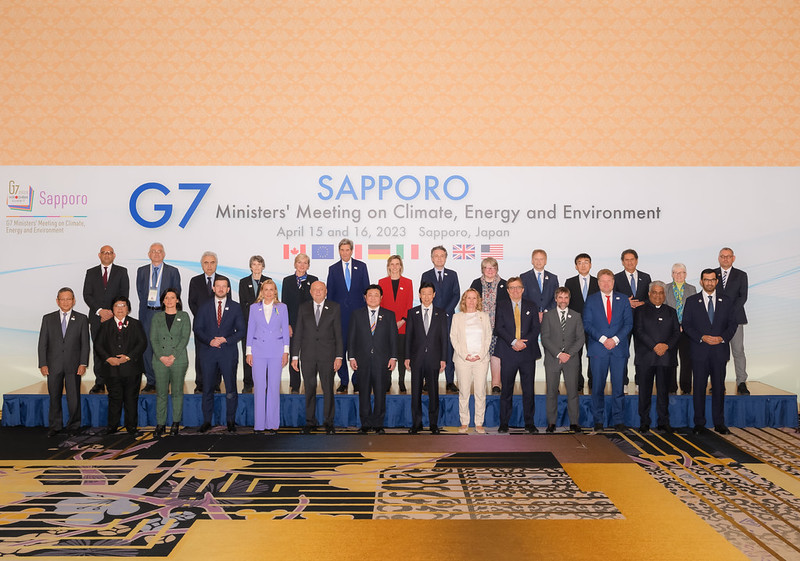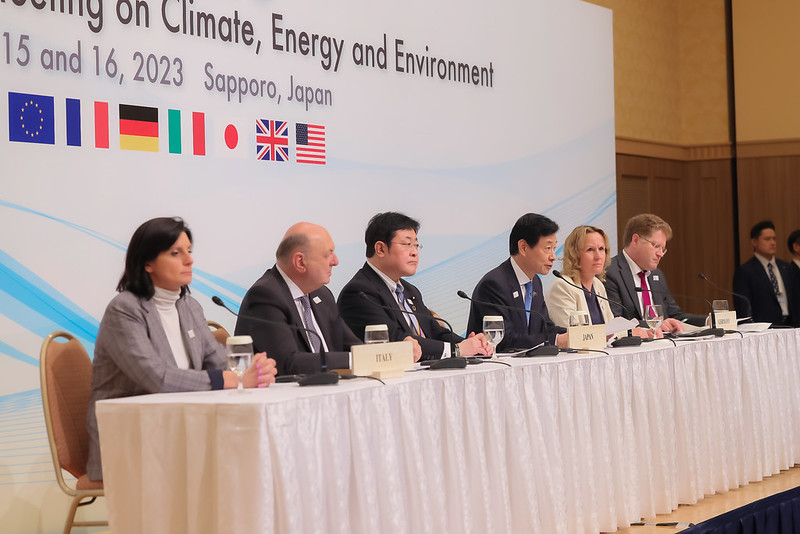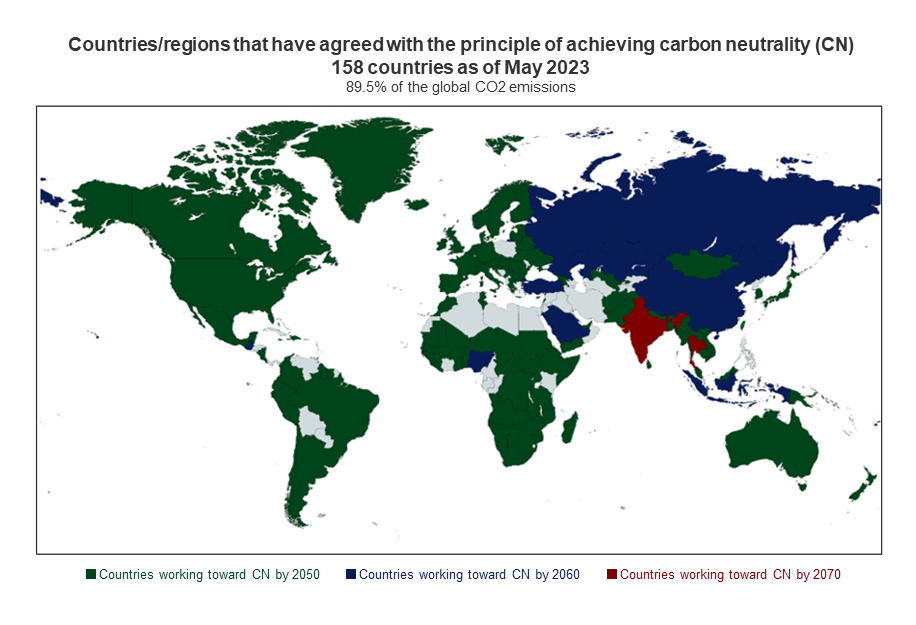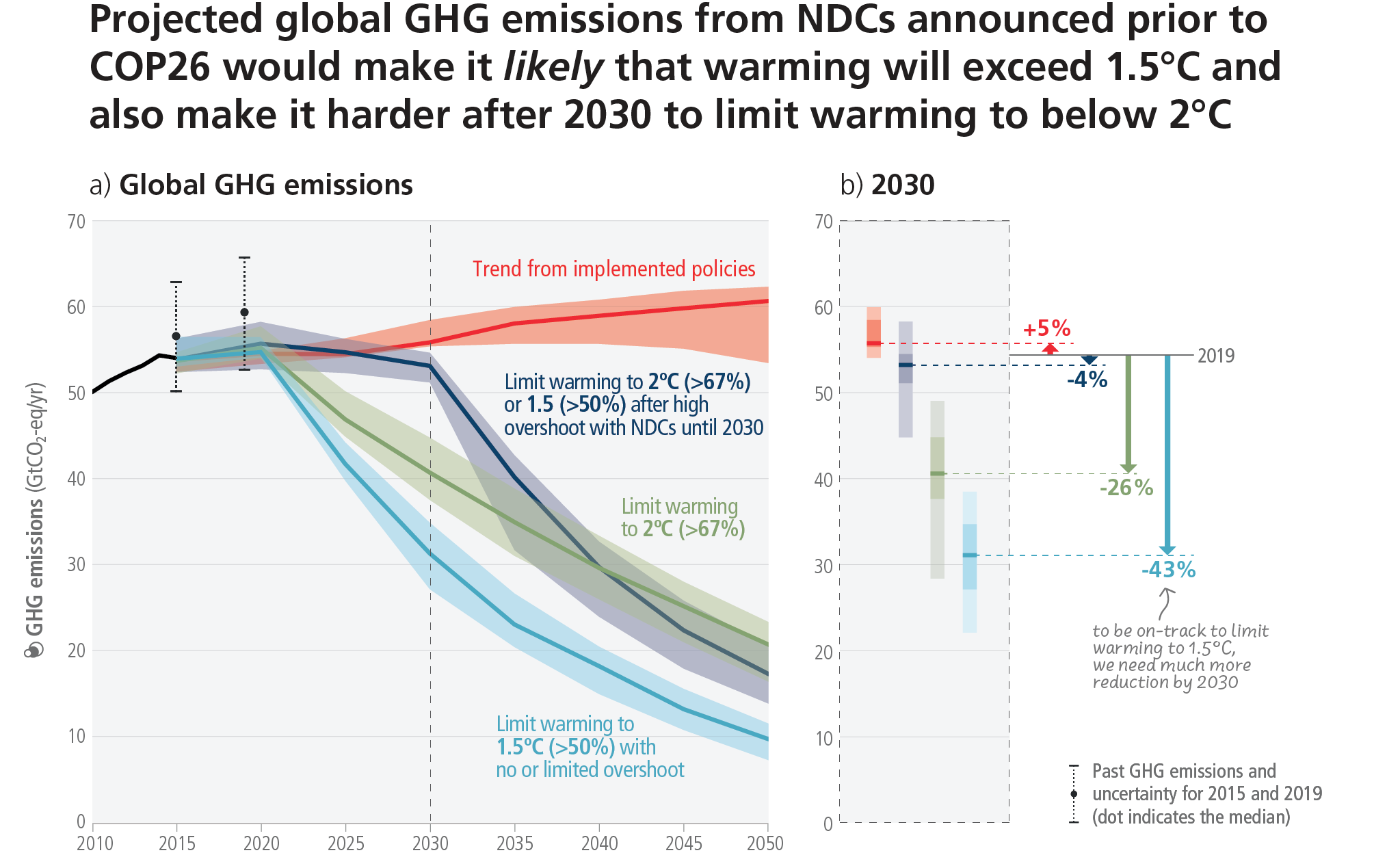The Future of Energy and the Environment as Discussed at the G7 Meeting
(in provisional translation)
(English ver.) 2023-09-01

The G7 Summit is an international forum held annually for the leaders of the G7 member states of France, the United States, the United Kingdom, Germany, Japan, Italy, and Canada (in the order of rotating presidency), and the European Union (EU). In 2023, as the G7 Presidency, Japan hosted the G7 Hiroshima Summit that was held from May 19 to 21. In addition to the Summit, several ministerial meetings were held in a number of places in Japan bringing together ministers in charge of specific fields. This article highlights the G7 Ministers’ Meeting on Climate, Energy and Environment that was held in Sapporo from April 15 to 16, 2023, while briefly touching on the significance of the G7 Summit.
The significance of holding the G7 Summit
At the G7 Summit, the leaders of the G7 exchange candid views on important challenges that the international community is facing and issue a document (communique) as an outcome of such discussions. Having seen various news regarding the G7 Hiroshima Summit, you may imagine the enormous amount of time required for preparation, coordination, and documentation by many officials and staff. What is the intention underlying the employment of such huge resources?
The significance of holding the G7 summit is that member states share the need to make collective endeavors that cannot be undertaken by a single country toward overcoming common challenges facing the international community.
For instance, climate change is one of the common challenges faced worldwide. To address climate change, countries around the world need to advance collective efforts toward the realization of a net-zero society (carbon neutrality.)
It is essential to make common rules. For example, there are more and more so-called “green products” made of steel or plastics with less CO2 emissions. However, if it were not for global standards, we would face difficulties in assessing such products.
In this instance, the G7 members, which are advancing efforts to develop green products, should discuss the issue among themselves first, and then lead the international discussions for establishing a common method of evaluating such products. The G7 will deliver a collective message at other opportunities such as the G20 and the COP (Conference of the Parties to the United Nations Framework Convention on Climate Change), thereby developing a roadmap toward properly evaluating green products.
The G7 meetings are no less significant for Japan as an opportunity for it to exert its influence in the world. In fact, the communique issued by the G7 Ministers Meeting on Climate, Energy and Environment includes wording which represents Japan’s thinking.
Action required on energy and the environment as agreed upon at the G7
The G7 Ministers’ Meeting on Climate, Energy and Environment held in Sapporo was co-chaired by Mr. Nishimura Yasutoshi, Minister of Economy, Trade and Industry, and Mr. Nishimura Akihiro, Minister of the Environment. Other than the G7 members, the following countries and organizations were invited.

-
 ●Invited countries:
●Invited countries:
India (G20 Presidency), Indonesia (ASEAN Presidency), United Arab Emirates (COP 28 Presidency) -
 ●Guest Organizations:
●Guest Organizations:
United Nations Framework Convention on Climate Change (UNFCCC)
Organisation for Economic Co-operation and Development (OECD)
International Energy Agency (IEA)
International Renewable Energy Agency (IRENA)
Economic Research Institute for ASEAN and East Asia (ERIA)
International Union for Conservation of Nature (IUCN)
World Business Council for Sustainable Development (WBCSD)
An outcome document referred to as a “communique” was agreed upon and issued. This article presents an overview of the document without going into details, covering what challenges G7 recognized, and what points it agreed upon to address those challenges.
Energy crisis surfacing in the midst of climate change as a global crisis
Climate change is an urgent challenge. In considering how to address it, various reports issued by the IPCC* based on scientific knowledge will form the basis for action.
* Intergovernmental Panel on Climate Change
The IPCC released the Synthesis Report for the Sixth Assessment Report. According to the report, limiting the global average temperature to well below 2 degrees Celsius above pre-industrial levels and pursuing efforts to limit the temperature increase to 1.5 degrees Celsius would require the realization of global net-zero GHG emissions by the early 2050s and early 2070s.
However, the combined countermeasures against climate change published by the respective countries before COP 26 will not be able to limit the global average temperature increase to below 1.5 or 2 degrees Celsius, and further accelerated actions will be required.
Climate change, biodiversity loss, and pollution, referred to as the triple crisis, must be tackled with collaboration on the three fields of climate, energy, and the environment. Furthermore, a global energy crisis is emerging, which requires the implementation of climate action while ensuring energy security.
Against this backdrop, the G7 Ministers’ Meeting on Climate, Energy and Environment agreed on the following directions in which various policies should be implemented.

Global efforts to be accelerated in collaboration with the Global South
The attendance of some Global South countries at the G7 Hiroshima Summit attracted attention. The G7 countries including the EU accounted for only 27% of the global CO2 emissions in 2020. Therefore, the whole world, including the Global South, must make collective efforts to overcome climate change.

(Source) Created by METI as of May 2023 taking into account the following:
-Countries participating in the Climate Ambition Alliance,
-Countries working toward CN by 2050 with a long-term strategy submitted to the UN, and
-Countries that agreed to work toward CN by 2050 at the COP 26 Climate Summit in April 2021
The G7 Ministers’ Meeting on Climate, Energy and Environment advocated accelerating global efforts toward limiting the global temperature rise to 1.5 degrees Celsius and achieving net zero by 2050.
- Salient points of the agreement
-
 Calls on all parties to the Paris Agreement to commit to peak CO2 emissions by no later than 2025.
Calls on all parties to the Paris Agreement to commit to peak CO2 emissions by no later than 2025.
-
 Requests that all GHGs in all relevant sectors be targeted.
Requests that all GHGs in all relevant sectors be targeted.
-
 Stresses commitment to accelerating the phasing out of the use of fossil fuels without emission-reduction measures, and requests countries other than the G7 to participate in this initiative.
Stresses commitment to accelerating the phasing out of the use of fossil fuels without emission-reduction measures, and requests countries other than the G7 to participate in this initiative.
Aiming at a common goal through diverse pathways while making collective efforts
Japan is the only Asian member country of the G7, and therefore is well positioned to know about situations in other Asian countries which are an important part of the Global South. In the growing Asian economies, GHG emissions tend to increase in line with the expanding demand for energy. Japan has been advocating emission reduction measures based on the situations in those Asian countries.
At the latest meeting held with Japan’s presidency, it was reaffirmed as a common recognition among the G7 that various and practical pathways taking into account national circumstances, including individual energy situations, will lead to net-zero GHG emissions as a global goal. This reflects Japan’s thinking. Furthermore, a message for accelerating green transformation (GX) globally was publicly released toward the integrated realization of a net-zero, circular economy* and nature positive economy,** while simultaneously pursuing economic growth and energy security.
*Circular economy: An economy which circulates products and resources to maintain their value for a long time, thereby minimizing waste.
**Nature positive economy: An economy which reduces negative impacts on biodiversity and puts it on a recovering trajectory.
- Examples of outcomes
-
 The G7 will contribute to expanding renewable energy globally and bringing down costs by strengthening capacity including through a collective increase in offshore wind capacity of 150GW by 2030 based on each country’s existing targets and a collective increase of solar PV to more than 1TW by 2030.
The G7 will contribute to expanding renewable energy globally and bringing down costs by strengthening capacity including through a collective increase in offshore wind capacity of 150GW by 2030 based on each country’s existing targets and a collective increase of solar PV to more than 1TW by 2030.
-
 It was clearly stated that hydrogen and ammonia should be used as effective emission reduction tools to advance decarbonization across sectors and industries and in the power sector to work towards zero-emission thermal power generation. The importance of developing international standards and certification schemes based on the concept of carbon intensity was confirmed.
It was clearly stated that hydrogen and ammonia should be used as effective emission reduction tools to advance decarbonization across sectors and industries and in the power sector to work towards zero-emission thermal power generation. The importance of developing international standards and certification schemes based on the concept of carbon intensity was confirmed.
-
 Recycled carbon fuels and gas (RCFs) such as e-fuels and e-methane also can reduce emissions, and it was recognized that CCS and CCU/carbon recycling technologies will be important solutions.
Recycled carbon fuels and gas (RCFs) such as e-fuels and e-methane also can reduce emissions, and it was recognized that CCS and CCU/carbon recycling technologies will be important solutions.
-
 The Global Data Collection Framework was agreed upon for industrial decarbonization stressing the importance of measuring decarbonization based on life cycle emissions.
The Global Data Collection Framework was agreed upon for industrial decarbonization stressing the importance of measuring decarbonization based on life cycle emissions.
-
 In the road transport sector, the G7 recognized for the first time the importance of reducing CO2 emissions from the entire vehicle stock, and confirmed the common recognition that the G7 can halve CO2 emissions from their entire vehicle stock by 2035 (compared with 2000 levels.)
In the road transport sector, the G7 recognized for the first time the importance of reducing CO2 emissions from the entire vehicle stock, and confirmed the common recognition that the G7 can halve CO2 emissions from their entire vehicle stock by 2035 (compared with 2000 levels.)
-
 The significance of avoided emissions was recognized, not to mention individual efforts made by businesses to reduce emissions from their own operations.
The significance of avoided emissions was recognized, not to mention individual efforts made by businesses to reduce emissions from their own operations.
-
 It was recognized that transition finance will be able to support the efforts made by businesses toward net zero.
It was recognized that transition finance will be able to support the efforts made by businesses toward net zero.
Responding to climate change while addressing the energy crisis
Another point worth noting is that the meeting clearly stated that energy security, climate change and geopolitical risks should be addressed holistically.
The current price hikes of energy have been caused by various factors which must be addressed, including energy security. In addition to energy-related issues, we are heavily dependent on specific countries for mineral resources used for manufacturing batteries. To achieve a transition to clean energy, it is also important to ensure a stable supply of such mineral resources by diversifying supply sources.
The meeting agreed to commit to implementation of the Five-Point Plan for Critical Mineral Security, and shared the need to prevent economic and security risks for supply chain management.
*****
Enormous amounts of coordination and negotiations are required for countries in different energy situations to maintain the same pace. The fact that the latest G7 Meeting reached the agreements as explained in this article is of tremendous significance.
Division in charge
About this article
Global Environmental Affairs Office, Industrial Science, Technology and Environment Policy Bureau, METI
International Affairs Division, Commissioner’s Secretariat, ANRE
About Special Contents
Research and Public Relations Office, Commissioner’s Secretariat, ANRE
![]() The original Japanese text of this article; Click here
The original Japanese text of this article; Click here

